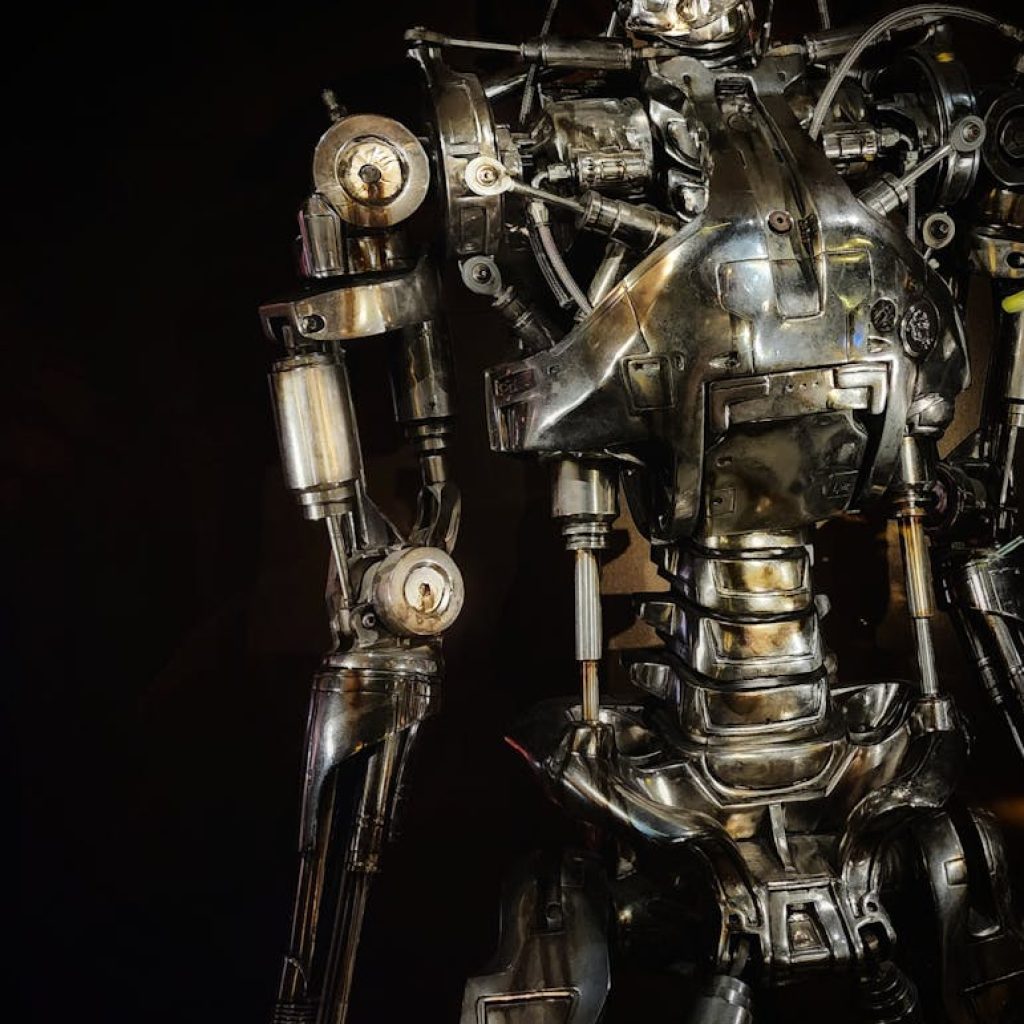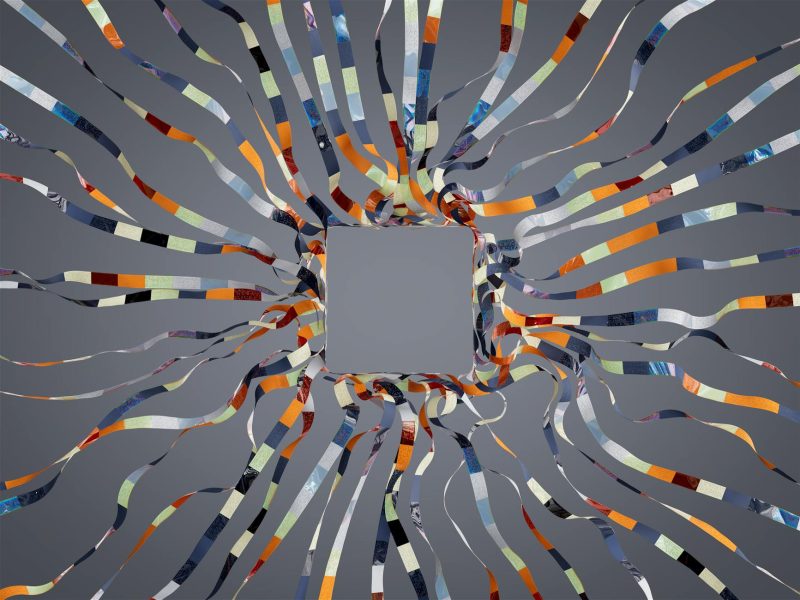Generative AI: Transforming Creative Industries
In an era where innovation knows no bounds, generative AI has emerged as a groundbreaking force, revolutionizing the way we create, inspire, and envision. This transformative technology, powered by algorithms like GANs (Generative Adversarial Networks) and transformers, is reshaping the landscape of creative industries, from art and music to writing and fashion. As we delve into the dynamic interplay between human creativity and artificial intelligence, it becomes clear that generative AI is not just a tool—it’s a catalyst for a new wave of artistic expression.
—
Revolutionizing Art: From Brushes to Algorithms
The art world has often been at the forefront of innovation, and generative AI is no exception. Artists are increasingly embracing AI as a medium, creating works that blend the human touch with machine learning. For instance, the sale of Edmond de Belamy, an AI-generated portrait, for $432,500 at Christie’s auction house in 2018, marked a pivotal moment. This event not only challenged traditional notions of creativity but also highlighted the potential of AI as a collaborator in the artistic process.
AI algorithms can analyze vast datasets of existing art, identifying patterns and styles that human artists might overlook. This capability allows for the creation of entirely new pieces that pay homage to historical masterpieces while introducing fresh perspectives. Platforms like DeepArt and Prisma have democratized this technology, enabling even novice creators to produce stunning, AI-generated art. In this collaboration, AI acts as both a muse and a medium, sparking new ideas and pushing the boundaries of what we consider “art.”
—
Reimagining Music Production: Harmonizing Human and Machine
The music industry is another realm where generative AI is making waves. Composers and producers are leveraging AI tools like Amper Music and AIVA to create original tracks, jingles, and even entire albums. These platforms use machine learning to analyze musical styles and generate compositions that are both cohesive and innovative.
One notable example is Taryn Southern, who released the album I Am AI in 2018, entirely composed with the help of AI. This project challenged the notion that creativity must be solely human, demonstrating how machines can enhance the creative process. AI’s ability to experiment with unconventional harmonies and rhythms has opened up new avenues for musical expression. While some critics argue that AI lacks the emotional depth of human creation, the technology is undeniably pushing the boundaries of what music can be.
—
Rethinking Writing and Content Creation: The Rise of AI-Assisted Storytelling
Generative AI is also transforming the world of writing and content creation. Tools like ChatGPT and WordLift are being used to generate blog posts, articles, and even entire books. While some worry about the potential for AI to replace human writers, others see it as a powerful tool for overcoming writer’s block and exploring new narrative styles.
AI’s ability to analyze vast amounts of text data allows it to generate content that is contextually relevant and stylistically consistent. For example, it can mimic the tone of a specific author or create stories tailored to particular audiences. This capability is particularly valuable in industries like marketing and publishing, where content needs to be produced quickly and efficiently. However, as AI-generated content becomes more prevalent, questions arise about authorship, originality, and the role of human creativity in a machine-driven world.
—
The Future of Fashion: AI-Driven Design and Trends
In the fashion industry, generative AI is being used to predict trends, design patterns, and even create entire collections. For example, the fashion brand Stylenanda has incorporated AI into its design process, using algorithms to identify emerging trends and create styles that resonate with their target audience. Similarly, companies like Stitch Fix are leveraging AI to personalize fashion recommendations and create custom designs for individual customers.
AI’s ability to analyze cultural shifts and consumer preferences makes it a valuable asset in a rapidly changing industry. However, it also raises questions about the homogenization of styles and the role of human intuition in fashion design. As the technology evolves, it will be fascinating to see how AI and human creativity continue to coexist in the world of fashion.
—
The Ethical and Cultural Implications of Generative AI
As generative AI becomes more integrated into creative industries, it’s important to address the ethical and cultural implications of this technology. For instance, who owns the rights to AI-generated content? Is it the person who programmed the AI, the person who prompted it, or the machine itself? These questions highlight the need for clear guidelines and regulations as generative AI becomes more prevalent.
Culturally, there’s also the question of representation and diversity. AI algorithms are only as diverse as the data they’re trained on, which can result in bias or a lack of representation in the content they generate. Efforts to create more inclusive datasets and algorithms are underway, but the challenge remains significant.
—
From Creativity to Commerce: The Business of Generative AI
Beyond the creative possibilities, generative AI has the potential to reshape the business models of creative industries. For instance, AI-generated content could disrupt traditional licensing agreements and revenue streams for artists, writers, and musicians. On the other hand, it could also create new opportunities for monetization, such as AI-generated art NFTs or personalized content subscriptions.
As the business side of generative AI continues to evolve, it’s essential to balance innovation with fairness and equity. Ensuring that human creators are fairly compensated for their work—and that AI-generated content is used ethically—will be key to the long-term success of this technology.
—
The Intersection of Technology, Wellness, and Creativity
The integration of generative AI into creative industries also touches on themes of wellness and mental health. For some, the ability to collaborate with AI can alleviate the pressure of constant creativity, providing a source of inspiration and relief. For others, the rise of AI-generated content may heighten anxieties about obsolescence or the value of human creativity.
Ultimately, the relationship between technology and wellness in this context is complex. It highlights the need for ongoing dialogue about how we can harness the benefits of generative AI while nurturing and celebrating the unique qualities of human creativity.
—
A Future of Synergy: Human Creativity Meets AI Innovation
As we look to the future, it’s clear that generative AI will continue to play a significant role in shaping creative industries. However, it’s not about replacing human creativity—it’s about augmenting and expanding it. AI has the potential to unlock new forms of artistic expression, streamline creative processes, and bring fresh perspectives to traditional mediums.
But as we embrace this technology, we must also remain mindful of its limitations and challenges. Generative AI is a tool, not a substitute for human ingenuity and emotion. The true magic happens at the intersection of machine learning and human creativity—a place where innovation meets inspiration.
—
Key Takeaways
– Generative AI is transforming creative industries by providing new tools for art, music, writing, and fashion.
– The technology has the potential to enhance human creativity, but it also raises important ethical and cultural questions.
– The future of generative AI will depend on our ability to balance innovation with fairness, equity, and a celebration of human creativity.
As we continue to explore the possibilities of generative AI, one thing is certain: the convergence of human imagination and machine intelligence is creating a world of endless possibilities. Whether you’re an artist, musician, writer, or simply someone who appreciates the beauty of creativity, this is an exciting time to be alive.
—
Reflection:
As someone who is both fascinated by technology and deeply appreciative of human creativity, I find the rise of generative AI to be a remarkable and thought-provoking development. It challenges us to rethink what it means to create and to consider the infinite possibilities that emerge when human ingenuity meets machine intelligence. If you enjoyed this exploration of generative AI, I invite you to explore more articles on BeNewsMag.com, where we dive into the latest trends at the intersection of technology, culture, and creativity.

